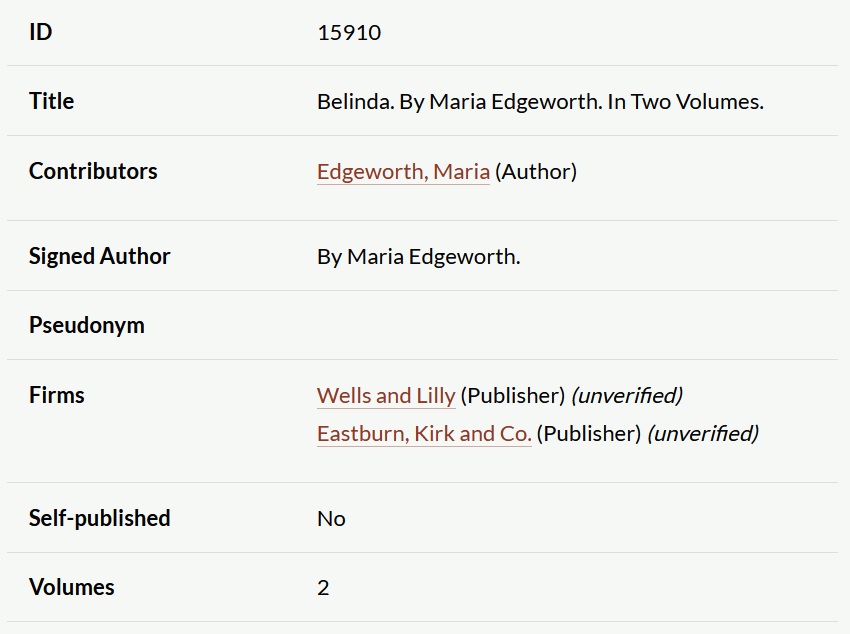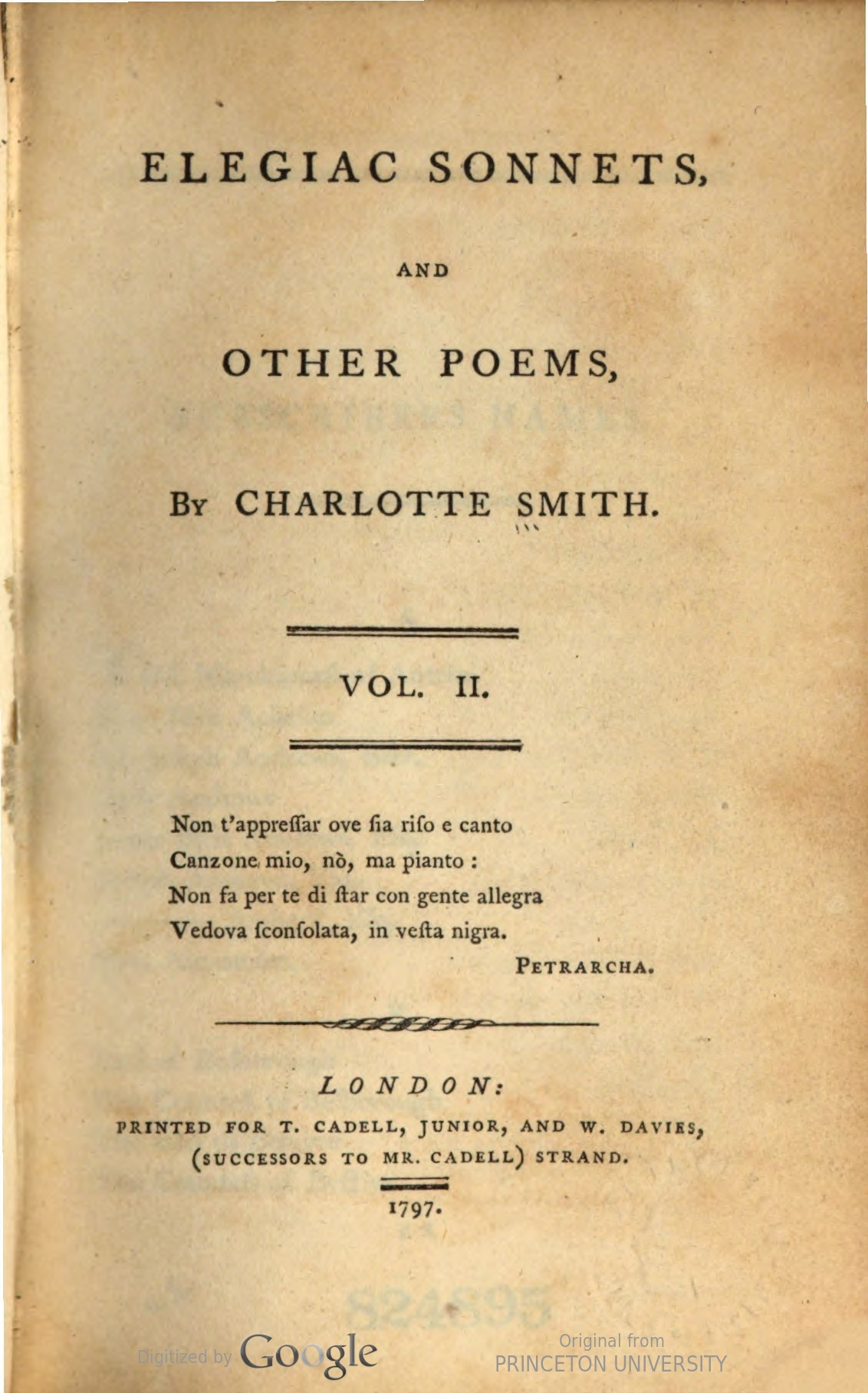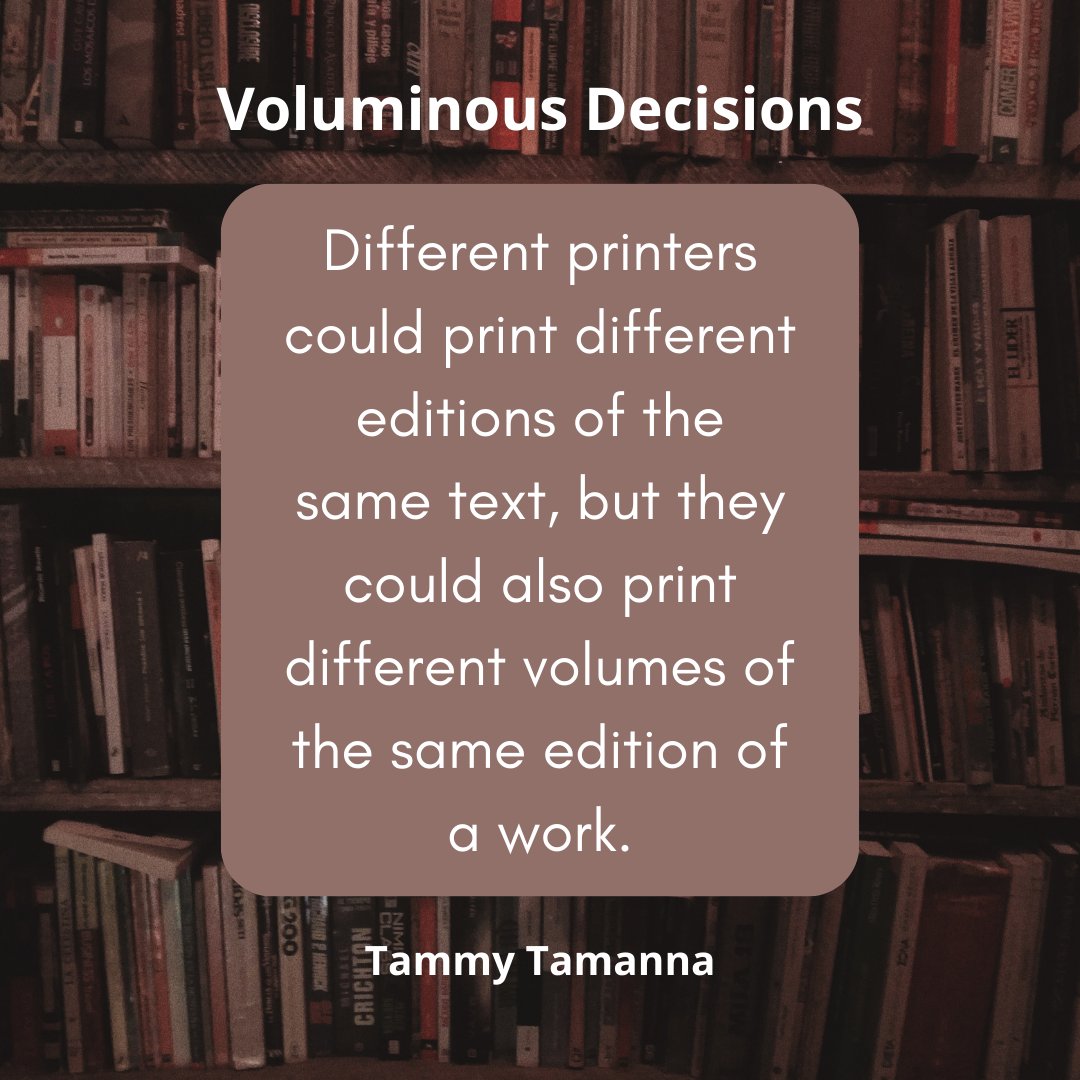This post is part of our By Our Books: Bibliography in the WPHP Spotlight Series, which will run through July 2023. This series attends to the bibliographical fields of the WPHP title records, tracing the history of our thinking about our descriptive practices and how they are informed by the sources available to us and by our feminist ambition to recognize and reconstruct women’s labour in print, broadly conceived.
Authored by: Tamanna (Tammy) T.
Edited by: Kandice Sharren, Michelle Levy, and Kate Moffatt
Submitted on: 07/19/2023
Citation: T, Tamanna. "Voluminous Decisions." The Women’s Print History Project, 19 July 2023, https://womensprinthistoryproject.com/blog/post/126/.

Figure 1.
The Women’s Print History Project uses the “volumes” field to capture the number of volumes an edition of a book has been published in, using Arabic numerals (for example, 3). Each volume contains its own title page, pagination and contents page. Multi-volume works functioned in two ways—the first was to break up a completed work into parts for improved organization and accessibility, and the second to add additional volumes to an existing work after its initial publication. Navigating and finding specific topics of interest becomes easier when a large book is broken into multiple volumes. “By this division of the work, the buyer may gratify his curiosity, or his ambition, as he wishes; he may buy only the Grammar, if he pleases, and yet gratify himself with the thoughts that he can, at any time, complete the whole,” says Samuel Johnson in the preface to the 1755 Dictionary of the English Language. Authors and publishers had a financial incentive to split books into multiple volumes, as it allowed them to increase the overall price and maximize profits. It was also possible to add volumes to an existing work after its initial publication. This method allows the authors to elaborate upon their ideas and incorporate new insights or research. It also creates a sense of continuity and engagement with the readers.
The WPHP keeps track of the number of volumes of a title, which can prove essential in knowing when a book and its various parts (and editions) were published, and whether they were printed at one address and printing shop. Different printers could print different editions of the same text, but they could also print different volumes of the same edition of a work. This is particularly relevant to the standardized three-volume structure of fiction, James Raven explains this in A Bibliographical Survey of Prose Fiction Published in the British Isles when he describes a five-volume work where “Longman employed four printing firms to produce the different volumes as quickly as possible … Baldwin, who printed volumes one and five, was significantly more expensive than the others” (Raven 2000, I: 95).
The multi-volume format was also advantageous for circulating libraries, which played a major role in book distribution, especially fiction. They primarily acquired novels in bulk, allowing them to accommodate longer sets within their budget (Garside, 2000 II: 90). Libraries with extensive sets could display books as retail items, attracting potential subscribers. Lending books by volume allowed for better access to newer and popular books.

Figure 2. Screenshot of the title record for the American edition of Belinda, which was published in two volumes rather than the original three (WPHP, ID 15910)
Volumes of the same work can be published together or separately, and WPHP organizes these different forms of publication differently. If multiple volumes are published in the same year, and share the same bibliographic information, the volumes share one record. For example, the first edition of Maria Edgeworth’s Belinda has 3 volumes. They were released together (as is stated in the full title itself), which is why it is one record. It is important to note, however, that different editions of the same work may contain different numbers of volumes. As long as they were released in the same year with the same edition, they are in one record. For instance, the Irish (Title ID 8512) and Boston (Title ID 15910) editions of Belinda have two volumes each.
If the volumes published span over multiple years, or each contains different bibliographic information, every volume will have its own record. For example, Charlotte Smith's Elegiac Sonnets was originally published as a single volume released in 1784, but a second volume was added 13 years later, in 1797. The two volumes look like they were published at the same time at first glance, but the title pages confirm that they were published at different times and hence are different editions. Multiple editions of Volume One were released in the time between the publication of the first and second volume of the book. This is why we have a 1797 record for Volume One and two 1797 records for Volume Two, which were designed to be uniform with the first volumes printed in 1789 and 1797, respectively.

Figure 3. Title page of one of the 1797 editions of Volume Two of Charlotte Smith's Elegiac Sonnets (Image from HathiTrust Digital Library)
Both methods for publishing works in separate volumes show practical and commercial advantages. Dividing a work into volumes facilitates organization and improves overall reading experience for the readers. It might also have an impact on the publication’s profits, with multiple volumes bringing in revenue. Adding volumes to an existing work also allows authors to maintain relevance and capitalize on the success and popularity of their previous works.
WPHP Works Referenced
Volumes (title field)
Belinda. In Three Volumes. (title, first edition)
Belinda. By Maria Edgeworth. In two volumes. (title, Irish first edition)
Belinda. By Maria Edgeworth. In two volumes. (title, Boston edition)
Elegiac sonnets, and other essays. By Charlotte Smith, of Bignor Park, in Sussex. (title, first edition)
Elegiac sonnets, and other poems, by Charlotte Smith. Vol. I. The eighth edition. (title, 1797 edition)
Elegiac sonnets, and other poems, by Charlotte Smith. Vol. II. (title, 1797 edition; uniform with first volume printed in 1789)
Elegiac Sonnets, and Other Poems. By Charlotte Smith. Volume II. (title, 1797 edition; uniform with the first volume printed in 1797)
Elegiac Sonnets, By Charlotte Smith. The Fifth Edition, With Additional Sonnets and Other Poems. (1789 edition)
Works Cited
Garside, Peter. "The English Novel in the Romantic Era: Consolidation and Dispersal." The English Novel, 1770–1829: A Bibliographical Survey of Prose Fiction Published in the British Isles, edited by Peter Garside et al., vol. 2, Oxford UP, 2000.
Raven, James. "The Novel Comes of Age." The English Novel, 1770–1829: A Bibliographical Survey of Prose Fiction Published in the British Isles, edited by Peter Garside et al., vol. 1, Oxford UP, 2000.
